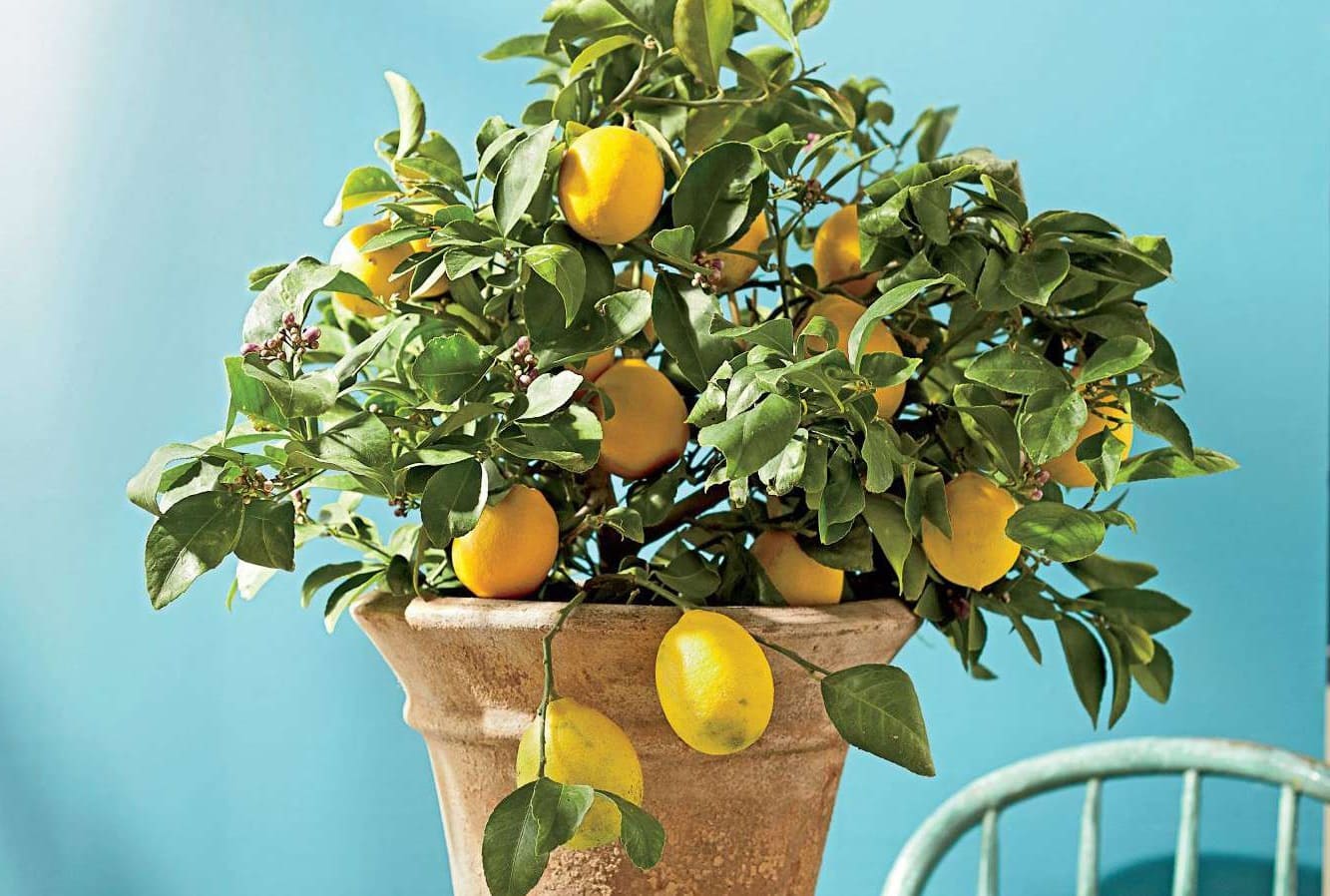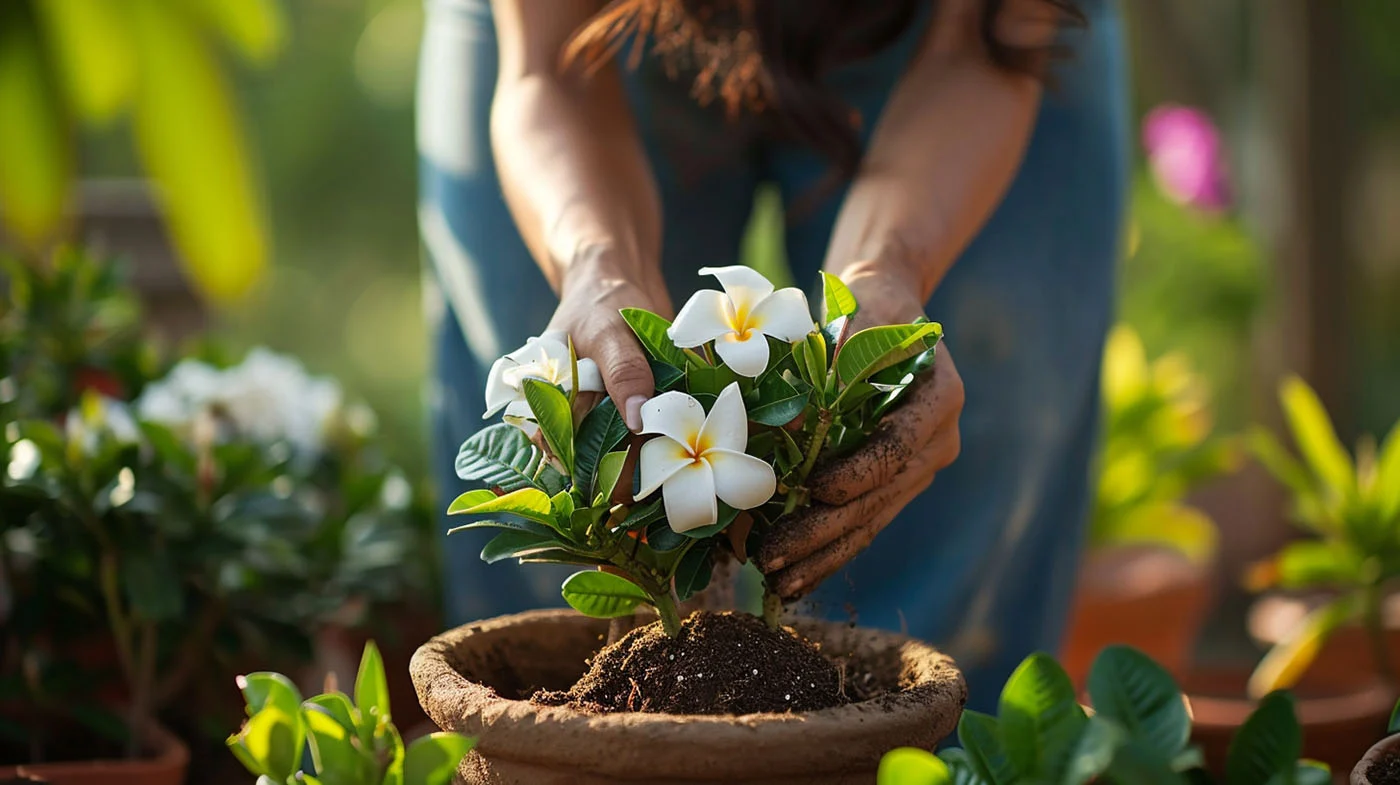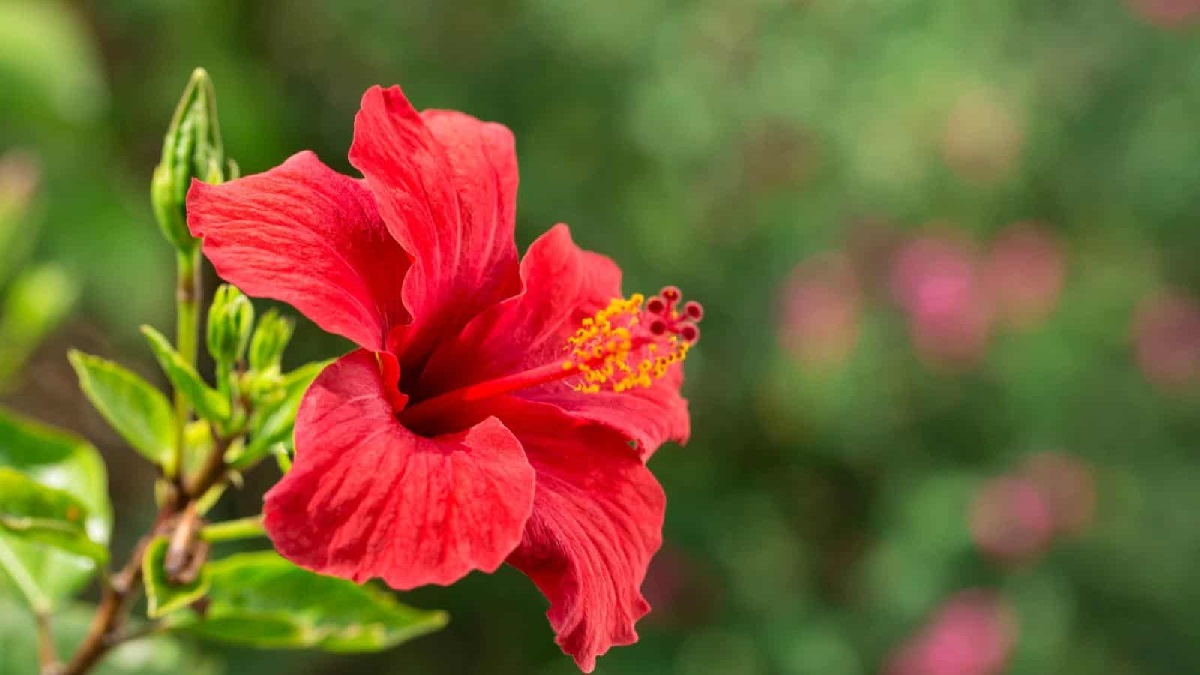Home>Home, Lifestyle & DIY>Tips For Caring For Your Meyer Lemon Tree


Home, Lifestyle & DIY
Tips For Caring For Your Meyer Lemon Tree
Published: February 21, 2024
Discover expert tips for caring for your Meyer lemon tree and enhancing your home, lifestyle, and DIY skills. Learn how to nurture and maintain your citrus tree for a fruitful and beautiful addition to your home.
(Many of the links in this article redirect to a specific reviewed product. Your purchase of these products through affiliate links helps to generate commission for Temperatures.com, at no extra cost. Learn more)
Table of Contents
Introduction
Meyer lemon trees are a delightful addition to any home, bringing a touch of citrusy freshness and a pop of vibrant green to your living space. Whether you're a seasoned gardener or just starting to explore the world of homegrown fruits, caring for a Meyer lemon tree can be a rewarding and enjoyable experience. These trees not only provide an abundant harvest of juicy, sweet lemons but also add a refreshing aroma to your home.
In this comprehensive guide, we will delve into the art of nurturing and maintaining a thriving Meyer lemon tree. From selecting the ideal location for your tree to mastering the art of pruning and training its branches, we'll cover every aspect of caring for these beautiful citrus trees. Additionally, we'll explore effective strategies for managing pests and diseases, ensuring that your lemon tree remains healthy and productive.
Furthermore, we'll discuss the rewarding experience of harvesting your Meyer lemons and offer creative ideas for using these luscious fruits in your culinary endeavors. Whether you're dreaming of whipping up a zesty lemon meringue pie or infusing your water with a burst of citrus flavor, your Meyer lemon tree can provide an abundant supply of fresh, homegrown lemons to elevate your culinary creations.
Join us on this journey as we unlock the secrets to nurturing a thriving Meyer lemon tree, and discover the joy of cultivating your own supply of delectable, sun-ripened lemons right in the comfort of your home. Let's embark on this citrus-filled adventure together, and unleash the full potential of your Meyer lemon tree!
Choosing the Right Location
Selecting the perfect spot for your Meyer lemon tree is a crucial first step in ensuring its health and productivity. Meyer lemon trees thrive in warm, sunny environments, making it essential to choose a location that receives ample sunlight. Ideally, aim for a spot that receives at least six to eight hours of sunlight daily. Placing the tree near a south-facing window or in a sun-drenched corner of your garden will provide the optimal amount of sunlight for its growth.
In addition to sunlight, it's important to consider the temperature and humidity of the chosen location. Meyer lemon trees prefer moderate temperatures, thriving in climates that range from 50 to 80 degrees Fahrenheit. Avoid exposing the tree to extreme temperature fluctuations, as this can hinder its growth and fruit production. Furthermore, ensure that the chosen location offers good air circulation to prevent the buildup of excess moisture, which can lead to fungal diseases.
When it comes to indoor cultivation, selecting a well-draining pot or container is essential for the health of your Meyer lemon tree. The container should have drainage holes to prevent waterlogging, which can cause root rot. Additionally, using a high-quality, well-draining potting mix will provide the necessary aeration and moisture retention for the tree's roots.
For outdoor planting, consider the soil quality and drainage of the chosen location. Meyer lemon trees thrive in slightly acidic to neutral soil with good drainage. Conduct a soil test to assess the pH level and composition of the soil, amending it as needed to create an optimal growing environment for your tree.
By carefully considering these factors and selecting a location that provides ample sunlight, moderate temperatures, good air circulation, and well-draining soil, you can set the stage for a thriving Meyer lemon tree. With the right location, your tree will be poised to flourish and reward you with an abundant harvest of luscious, sun-ripened lemons.
Watering and Fertilizing
Proper watering and fertilizing are essential components of caring for your Meyer lemon tree, ensuring its growth, fruit production, and overall health. Understanding the specific watering needs of your tree and providing it with the right balance of nutrients will contribute to its vitality and the quality of the lemons it yields.
Watering
Meyer lemon trees require consistent moisture to thrive, but it's crucial to strike a balance and avoid overwatering, which can lead to root rot. The frequency of watering will depend on various factors such as the climate, soil type, and the tree's stage of growth. As a general guideline, it's recommended to water the tree deeply when the top inch of the soil feels dry to the touch. This allows the water to penetrate the root zone, promoting healthy root development.
During the growing season, typically spring and summer, when the tree is actively producing new growth and fruit, regular watering is essential. In warmer climates or during periods of intense heat, the tree may require more frequent watering to maintain adequate moisture levels. Conversely, in cooler weather or during the tree's dormant phase, the watering frequency can be reduced to prevent waterlogged soil.
When watering your Meyer lemon tree, aim to provide a slow, deep soak rather than frequent shallow watering. This encourages the development of a robust root system, enabling the tree to efficiently absorb nutrients from the soil. Additionally, using a layer of organic mulch around the base of the tree helps retain soil moisture, regulates soil temperature, and reduces water evaporation.
Fertilizing
In addition to proper watering, fertilizing your Meyer lemon tree is vital for ensuring its vigor and fruitfulness. A balanced fertilizer specifically formulated for citrus trees, with a higher nitrogen content, is ideal for promoting healthy foliage growth and fruit production. It's recommended to apply the fertilizer in early spring, just before the tree enters its active growth phase.
When fertilizing your Meyer lemon tree, follow the manufacturer's instructions regarding the application rate and frequency. Over-fertilizing can lead to excessive vegetative growth at the expense of fruit production, so it's important to apply the fertilizer in moderation. Additionally, incorporating organic matter into the soil, such as compost or well-rotted manure, provides a natural source of nutrients and enhances the soil's fertility.
By understanding the watering and fertilizing needs of your Meyer lemon tree and providing it with the appropriate care, you can support its growth and ensure a bountiful harvest of delicious, sun-kissed lemons. With a balanced approach to watering and fertilizing, your Meyer lemon tree will thrive, gracing you with an abundance of juicy, flavorful fruit to enjoy in your culinary creations.
Pruning and Training
Pruning and training are essential practices for shaping the growth of your Meyer lemon tree, promoting optimal fruit production, and maintaining its overall health. Proper pruning helps manage the tree's size, shape, and density, while training its branches encourages an open structure that allows sunlight to reach all parts of the tree. These practices also facilitate air circulation, reducing the risk of disease and promoting the development of strong, fruit-bearing branches.
Pruning
Begin by inspecting your Meyer lemon tree for any dead, damaged, or diseased branches. These should be promptly removed to prevent the spread of disease and encourage healthy growth. Additionally, pruning can help eliminate any crossing or overcrowded branches, allowing for better air circulation and light penetration throughout the tree.
When pruning, use clean, sharp pruning shears to make clean cuts at a 45-degree angle just above a bud or lateral branch. Avoid leaving stubs, as they can invite disease and hinder the tree's regrowth. Focus on maintaining an open center and a balanced framework of branches, which will support the weight of future fruit and facilitate easy harvesting.
Training
Training your Meyer lemon tree involves guiding its growth to achieve an open, well-structured canopy. This can be achieved by gently bending and securing young, flexible branches to encourage a spreading growth habit. As the tree matures, periodic training can help maintain an open canopy, allowing sunlight to reach all parts of the tree and promoting even fruit development.
Consider using soft ties or gardening tape to gently secure branches into the desired position, being careful not to constrict the tree's growth. Regularly assessing the tree's growth and making necessary adjustments will help guide its development and ensure a balanced, productive canopy.
By incorporating regular pruning and training into your care routine, you can shape the growth of your Meyer lemon tree, encourage healthy fruit production, and create an aesthetically pleasing and manageable tree. These practices not only contribute to the tree's overall well-being but also provide the opportunity to customize its growth to suit your space and aesthetic preferences.
With diligent pruning and thoughtful training, you can cultivate a flourishing Meyer lemon tree that not only yields an abundant harvest of delectable lemons but also enhances the visual appeal of your indoor or outdoor space. Embrace the art of pruning and training as essential tools for nurturing a thriving and productive Meyer lemon tree.
Pest and Disease Management
Pest and disease management is a critical aspect of caring for your Meyer lemon tree, safeguarding its health and ensuring a bountiful harvest of luscious, unblemished fruit. By staying vigilant and implementing proactive measures, you can effectively protect your tree from common pests and diseases that may threaten its well-being.
Pest Management
-
Citrus Leaf Miner: These tiny larvae tunnel through the leaves, leaving distinctive serpentine patterns. To combat this pest, regularly inspect the foliage for signs of infestation and consider introducing natural predators such as beneficial insects or applying horticultural oil to suffocate the larvae.
-
Scale Insects: These sap-feeding insects can weaken the tree and excrete a sticky substance known as honeydew, attracting ants and promoting the growth of sooty mold. Pruning heavily infested branches and applying organic insecticidal soap can help control scale infestations.
-
Aphids: These small, soft-bodied insects can cluster on new growth, causing leaf distortion and stunted growth. Encouraging natural predators such as ladybugs and lacewings, or using a strong blast of water to dislodge aphids, can help manage infestations.
Disease Management
-
Citrus Canker: This bacterial disease causes raised, corky lesions on leaves, fruit, and stems, ultimately leading to defoliation and fruit drop. Implementing strict sanitation practices, promptly removing and destroying infected plant material, and applying copper-based fungicides can help manage citrus canker.
-
Citrus Root Rot: Caused by soilborne fungi, this disease can lead to wilting, yellowing foliage, and overall decline of the tree. Improving soil drainage, avoiding overwatering, and applying fungicidal drenches can help mitigate the impact of citrus root rot.
-
Powdery Mildew: This fungal disease appears as a powdery white coating on the leaves and stems, hindering photosynthesis and weakening the tree. Pruning to improve air circulation, applying sulfur-based fungicides, and maintaining proper spacing between plants can aid in preventing and managing powdery mildew.
By staying informed about the signs of common pests and diseases that affect Meyer lemon trees, you can promptly address any issues that arise and implement preventive measures to protect your tree. Regularly monitoring your tree for signs of pest infestation or disease symptoms, and taking proactive steps to manage these challenges, will contribute to the overall health and vitality of your Meyer lemon tree.
Remember, a proactive and attentive approach to pest and disease management is key to safeguarding the well-being of your Meyer lemon tree, allowing it to thrive and produce an abundance of delectable lemons for your enjoyment.
Harvesting and Using Meyer Lemons
Harvesting the sun-ripened, golden treasures from your Meyer lemon tree is a moment of pure satisfaction, marking the culmination of your care and dedication. When the lemons reach their peak ripeness, typically in late winter to early spring, it's time to savor the fruits of your labor. Meyer lemons are prized for their thin, fragrant skin and a sweeter, less acidic flavor compared to traditional lemons, making them a versatile ingredient in both sweet and savory dishes.
To harvest Meyer lemons, gently twist the fruit from the tree, being careful not to damage the surrounding branches or the delicate skin of the lemons. It's best to harvest the lemons when they have developed a vibrant yellow hue and a slight give when gently squeezed. Avoid picking them when they are still green, as they may not have reached their full sweetness and juiciness.
Once you've gathered your bountiful harvest of Meyer lemons, the culinary possibilities are endless. From zesty lemon tarts and tangy lemon curd to refreshing lemonade and flavorful marinades, these luscious fruits can elevate a wide array of dishes and beverages. The juice and zest of Meyer lemons add a bright, citrusy dimension to salads, seafood, poultry, and desserts, infusing each creation with a burst of sunny flavor.
Preserving the abundance of Meyer lemons is another delightful way to extend their enjoyment throughout the year. Consider making homemade lemon preserves, marmalade, or pickled lemons to capture their vibrant flavor and enjoy a taste of sunshine during the cooler months. Additionally, freezing Meyer lemon juice and zest in ice cube trays allows you to conveniently incorporate their refreshing essence into your culinary endeavors whenever inspiration strikes.
Beyond the kitchen, Meyer lemons can be used to create fragrant, all-natural cleaning solutions and invigorating citrus-infused body scrubs. Their aromatic zest and juice bring a refreshing, uplifting scent to DIY household cleaners and personal care products, adding a touch of natural brightness to your daily routines.
Incorporating the harvest of Meyer lemons into your culinary and lifestyle pursuits is a celebration of their vibrant flavor and versatile utility. Whether you're indulging in a delectable lemon-infused dessert, crafting homemade preserves, or infusing your living space with the invigorating scent of citrus, the bounty of Meyer lemons offers a myriad of opportunities to savor their essence and enhance your everyday experiences.
With a bit of creativity and a dash of citrus-inspired inspiration, the harvest of Meyer lemons becomes a delightful journey of culinary exploration and sensory delight, inviting you to savor the abundant rewards of nurturing your very own Meyer lemon tree.
Conclusion
In conclusion, caring for a Meyer lemon tree is a deeply rewarding endeavor that offers a wealth of sensory delights and culinary possibilities. From selecting the perfect location to nurturing the tree through watering, fertilizing, pruning, and pest management, each aspect of tending to a Meyer lemon tree contributes to its overall health and productivity. The journey of cultivating a thriving Meyer lemon tree is not only a testament to the joys of gardening but also a gateway to a vibrant world of citrus-infused experiences.
As the sun-kissed lemons ripen and the branches flourish with fragrant blooms, the Meyer lemon tree becomes a source of natural beauty and a symbol of the abundance that nature graciously bestows. The act of harvesting the golden fruits, brimming with sweet, tangy flavor, marks the culmination of the tree's growth cycle and the beginning of a culinary adventure. From zesty lemon tarts to aromatic preserves, the Meyer lemons offer a versatile canvas for culinary creativity, infusing each dish with a burst of sunny flavor and aromatic zest.
Beyond the realm of culinary delights, the Meyer lemon tree enriches the living space with its lush foliage and refreshing citrus aroma, creating a tranquil oasis of natural beauty. Whether nestled in a sunlit corner of the garden or gracing the interior of a home, the Meyer lemon tree becomes a living testament to the joys of nurturing and the simple pleasures of savoring the fruits of one's labor.
As the seasons unfold and the Meyer lemon tree thrives under attentive care, it becomes a symbol of resilience and vitality, inspiring a deeper connection to the natural world. The act of tending to the tree, observing its growth, and savoring the fruits it bears fosters a sense of harmony and appreciation for the cycles of nature, reminding us of the profound interconnectedness between humans and the earth.
In essence, the journey of caring for a Meyer lemon tree transcends the realm of horticulture, offering a tapestry of experiences that engage the senses, ignite culinary creativity, and foster a deeper connection to the natural world. It is a journey that celebrates the simple pleasures of nurturing life and savoring the abundant rewards that nature graciously bestows. Embracing the art of cultivating a thriving Meyer lemon tree is an invitation to embark on a citrus-filled odyssey, where each step nurtures the soul and yields a bountiful harvest of joy and sensory delight.













